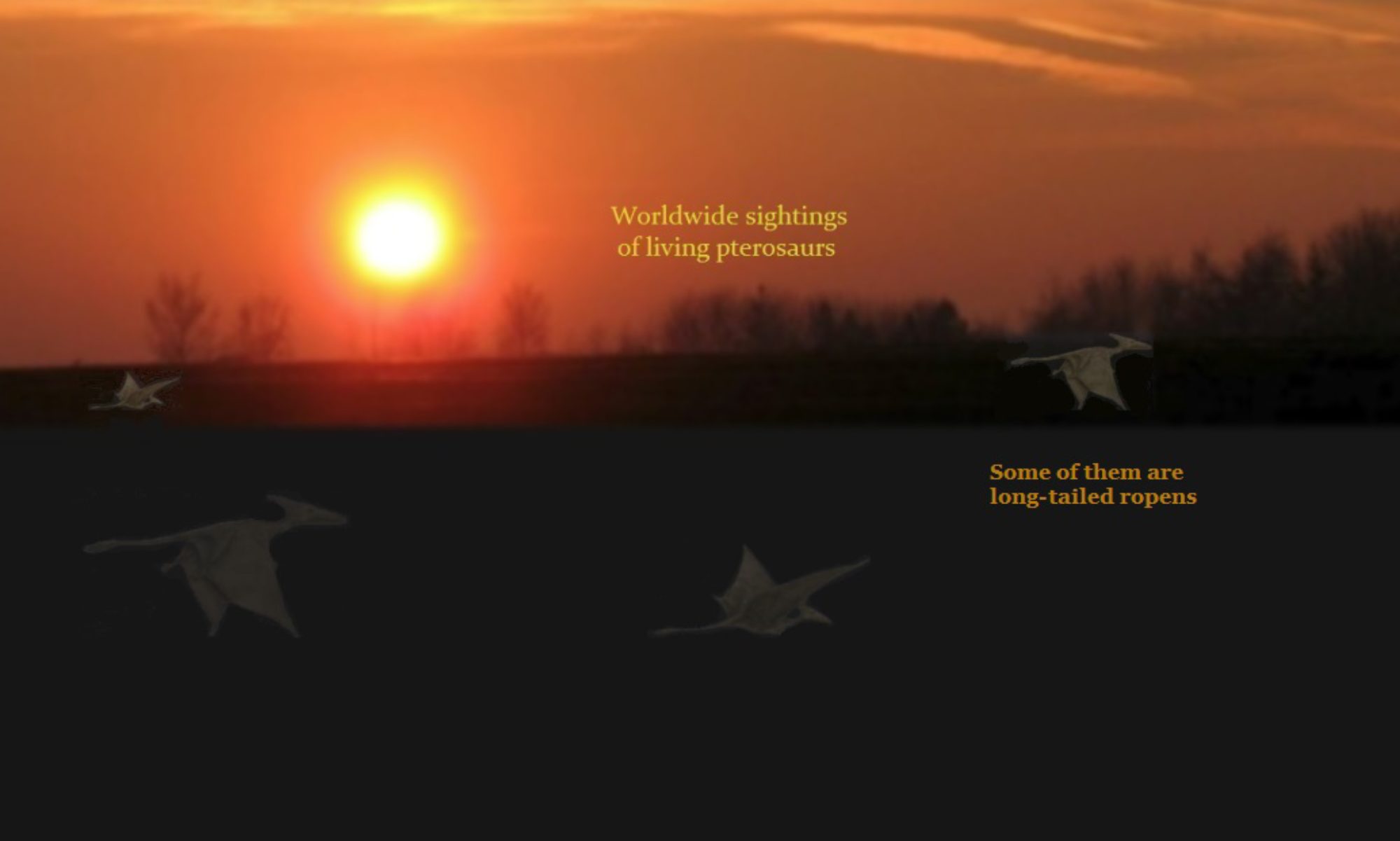Not all books that include a sighting of an apparent living pterosaur are in the cryptozoology genre. Let’s begin with a translation of an ancient writing by the Jewish historian Josephus, who lived almost 2,000 years ago.
The New Complete Works of Josephus, translated by William Whiston
But Moses . . . did not march by river, but by land, where he gave a wonderful demonstration of his wisdom; for when the ground was difficult to be passed over, because of the multitude of serpents (which it produces in vast numbers, and, indeed, is singular in some of those productions, which other countries do not breed, and yet such as are worse than others in power and mischief, and an unusual fierceness of sight, some of which ascend out of the ground unseen, and also fly in the air, and so come upon men at unawares, and do them a mischief).
By the way, the above account of Moses encountering flying serpents has no direct relationship with the fiery flying serpents mentioned in the Old Testament. Josephus is here telling us about a time before Moses was a prophet to the Israelites, when Moses was leading an Egyptian army to battle. Still, it could have been the same species of pterosaur, a Rhamphorhynchoid (long-tailed) pterosaur.
.
 Folk Lore and Folk Stories of Wales, by Marie Trevelyan and E. Sidney Hartland
Folk Lore and Folk Stories of Wales, by Marie Trevelyan and E. Sidney Hartland
The woods around Penllyne Castle, Glamorgan, had the reputation of being frequented by winged serpents, and these were the terror of old and young like. An aged inhabitant of Penllyne . . . said that in his boyhood the winged serpents were described as very beautiful. . . . Some of them had crests sparkling with all the colours of the rainbow. . . . His father and uncle had killed some of them, for they were “as bad as foxes for poultry.”
The first publication date of the above book (1909) suggests those winged creatures could have been killed off, in that part of Wales, before the middle of the nineteenth century. In fact, the “aged inhabitant” may have lived in that area in the early years of that century, and his father and uncle even much earlier, and he gave no indication he had seen the creatures himself: that species of “winged serpent” may have become extinct by early in the nineteenth century.
Unexplained! by Jerome Clark
At 3:55 a.m. on September 14, 1982, James Thompson, an ambulance technician, was driving along Highway 100 four miles east of Los Fresnos, Texas. . . . He suddenly spotted a “large birdlike object” pass low over the highway 150 feet in front of him. . . . “It had a black, or grayish, rough texture. It wasn’t feathers. I’m quite sure it was a hide-type covering.” . . . its wingspan was five to six feet.
Books Specializing in Modern Pterosaurs
I mention the above nonfiction books to emphasize that I am not the only author that writes about apparent encounters with modern living pterosaurs.
My three nonfiction books about these amazing flying creatures are:
- Searching for Ropens and Finding God (in 4th edition)
- Live Pterosaurs in America (in 3rd edition)
- Live Pterosaurs in Australia and in Papua New Guinea (free pdf)
###
.
“He has lived and worked in some very remote areas [of the Congo in Africa], and has had several encounters with different cryptids. He says that the existence of pterosaur-like creatures is common knowledge among the locals of a certain area where he was working.”
Sense of Truth – Nonfiction Book
Look at a box of mac ‘n cheese or frozen chicken nuggets, the ones with tasty shapes of dinosaurs. Notice that some of those shapes have wings, like what many of us call pterodactyls. Did you notice the word prehistoric on the box? Now notice what small children are taught.
Why would we work so hard, for so long, with so many opportunities to fabricate pterosaur sightings in so many remote jungles, and then admit that we never saw any clear form of a pterosaur? It is because we intend not to deceive but to enlighten.
Fiery Flying Serpent of Old Testament
. . . a modern Rhamphorhynchoid pterosaur, possibly related to the long-tailed nocturnal creatures now seen in various areas of the world. A small portion of modern encounters with these creatures is reported to have caused human deaths in Papua New Guinea and in British Columbia . . .
Three Books on Modern Pterosaurs
Three nonfiction cryptozoology books on modern pterosaurs in North America are now available on Amazon. The three authors, Ken Gerhard, Jonathan Whitcomb, and Gerald McIsaac, have independently written their books, with no apparent collaboration between them.
.









